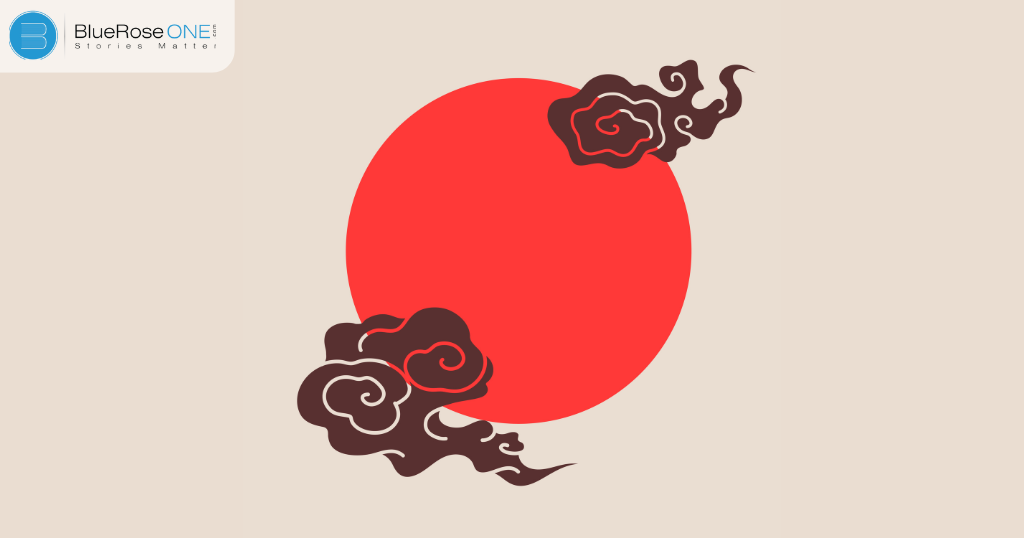Looking to publish a Japanese Book? Japanese (日本語, Nihongo,) is spoken natively by around 128 million people, largely by Japanese people and primarily in Japan, the country’s only national language. The Japonic or Japanese-Ryukyuan language family includes Japanese. Many attempts have been made to group the Japonic languages with other families, including the Ainu, Austroasiatic, Koreanic, and the now-discredited Altaic, but none of these suggestions have achieved broad acceptance.
It is largely spoken throughout the Japanese archipelago; however, there are over 1.5 million Japanese immigrants and their descendants living abroad, mostly in North and South America, who speak Japanese to varied degrees. Since the mid-twentieth century, only Japan has utilized Japanese as a first or second language.
The country’s terrain, which includes high mountain peaks, deep valleys, and little isolated islands, has encouraged the spread of numerous dialects throughout the archipelago. Different dialects are frequently mutually incomprehensible; for example, the majority of Honshu residents do not understand the Kagoshima dialect of Kyushu. Similarly, most people in metropolitan Tokyo and throughout western Japan do not understand northern dialect speakers from locations like Aomori and Akita. Dialectologists in Japan agree that a large dialect barrier distinguishes Okinawan dialects from the rest of the mainland dialects.
The latter are then classified as Eastern, Western, and Kyushu dialects, or simply Eastern and Western dialects, with the latter containing the Kyushu group. The spread of the kyts-go “common language,” based on the Tokyo dialect, has resulted in linguistic unification. Since its inception in 1886, compulsory education has included an uniform written language. Modern mobility and mass media have also aided in the leveling of dialectal distinctions and have had a significant impact on the increased rate of extinction of local dialects.
You may also read: What is External Conflict? Definition, Examples and Writing Tips
History of Japanese Language-
Japanese written documents extend back to the eighth century, with the oldest being the Kojiki (712; “Records of Ancient Matters”). If the history of the language could be divided into two parts, it would be between the 12th and 16th centuries, when the language lost much of its Old Japanese traits and gained those of the present language.
However, the 1,200-year history is commonly divided into four or five periods: Old Japanese (up to the 8th century), Late Old Japanese (9th-11th century), Middle Japanese (12th-16th century), Early Modern Japanese (17th-18th century), and Modern Japanese (19th century to the present).
Influence of Japanese on the world-
Over the ages, the influence of Japanese culture on the Western world has resulted in many of its terminology, such as origami, tsunami, karaoke, and pop cultural phrases such as shonen and shojo, being absorbed into the English language and added to the Oxford English Dictionary. The anime, Japanese drama and the most popular book IKIGAI which is a Japanese word has been slowly taking over the world.
Cultural contact with China and Chinese literature, often written in Classical Chinese, profoundly inspired early works of Japanese literature. As Japanese writers began producing their own works about Japan, Japanese literature evolved into a distinct style in its own right. The Tale of Genji, written by Murasaki Shikibu during the Heian period, is recognized around the world as a work of original Japanese literature. Since Japan opening its ports to Western business and diplomacy in the nineteenth century, Western and Eastern literature have influenced and continue to influence each other.

Few Tips to Publish a Japanese Book-
- Continue to work on and finish your manuscript.
Getting started on your manuscript is the first step toward your goal of producing a book in Spanish. Determine the premise, characters, and setting of your story. Look for ideas in Spanish-language novels. - Figure out the services you’ll need.
You should be aware of the services you’ll need, such as editing and proofreading. You will need translation services if you are writing your book in English. - Make a list of publishing houses while keeping in mind your target demographic.
Determine which Japanese Book Publisher will best meet your needs. - Compare and choose.
Compare the Japanese publishing houses on your short list to choose one that meets all of your requirements. Choose a publishing business that can meet all of your specific service needs. - Begin the publishing process.
You can begin the process of publishing your dream project once you’ve decided on a publishing business. It is necessary to collaborate with the publishing staff. - Marketing and promotion.
Once your book is published, market it to your target demographic. Make sure your intended audience understands what your book is about and why they should read it.
You may also like: How to Publish a Book? | Publish Your Book | BlueRoseOne
In the world of Japanese Publishing, their books have two types – manga (comics) and novels.
Five Popular Japanese Manga-
- One Piece
- Detective Conan
- Golgo 13
- Dragon Ball
- Naruto
Five Popular Japanese novels-
- The Tale of Genji by Murasaki Shikibu
- The Woman in the Purple Skirt by Natsuko Imamura
- Snow Country by Yasunari Kawabata
- The Silent Cry by Kenzaburo Oe
- No Longer Human by Osamu Dazai
Being an author is a dream for many and to become successful in the international market is a milestone in itself. BlueroseONE helps the growing writers to be known in national as well as international markets.
We publish books in many international languages like Portuguese, Chinese, Arabic, French, Japanese, Russian, Korean, Spanish, German and much more.
BlueroseONE assists emerging writers towards being noticed in both national and international markets.
















